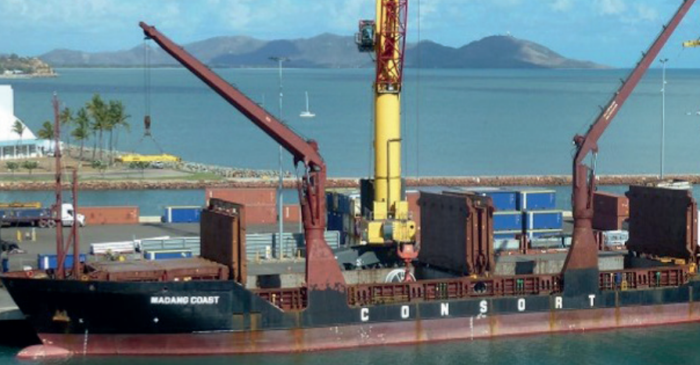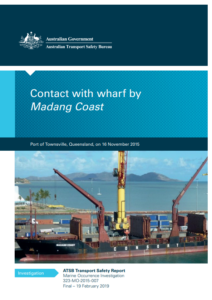ATSB published its final report into the cargo ship ‘Madang Coast’ impacting a wharf at the Port of Townsville. The incident has led to the updating and full implementation of a safety management system, in order to better identify risks and how to mitigate them.
The incident
On 16 November 2015, a pilot boarded Madang Coast for its transit into Townsville, Queensland. The master and pilot completed the master-pilot information exchange, which included the berthing plan at Berth 10.
As the ship was nearing the berth, the first line ashore, the forward spring, was looped over a bollard on Berth 10. The forward mooring party made two turns around the first post of the bitts and held onto the spring line. However, moments later, as weight came onto the line, the line slipped on the post and fell slack.
Madang Coast started moving off the berth towards a ship on the opposite berth. Despite repeated efforts to hold on to the line, it continued to fall slack. As a result, its bow made contact with the shore end of Berth 10 and its port quarter with the ship on the opposite berth. Both ships sustained minor damages and there were no injuries.
Probable cause
As Madang Coast was approaching the wharf, the forward spring line slipped and could not be used to manoeuvre against. After the spring line slipped, the distance from the stern to the wharf was too far for the aft mooring party to throw any heaving lines ashore. Thus, the stern’s movement away from the wharf continued.
The shipping agent asked for a tug reduction for the ship’s berthing. The acting regional harbour master, pilot manager and the ship’s master did not know that the agent’s application was made without the master’s knowledge.
What is more, the pilotage service did not have documented guidance procedures for berthing or any related contingencies. The risk management processes were not sufficiently mature nor resilient enough to identify and mitigate risks in pilotage services.
Lessons learned
After the incident, the Port of Townsville Limited (POTL) Pilotage Services has conducted a review, while also updated and implemented a safety management system (SMS). The SMS included detailed berthing, operations and emergency procedures amongst others. The qualifications and training requirements for licensing pilots for the number of observation, supervised and check trips have also significantly increased.
In addition, the tug reduction requesting procedure is now updated and requires a declaration by the ship’s master that an assessment of the intended manoeuvres to and/or from berths have been undertaken.
Recommendations
ATSB notes that risk management issues regarding the safe pilotage of ships are commonly known by all parties involved. However, the reality is not always understood, nor acted upon. A large number of incidents provide the answers to many of retrospective questions that are asked.
Where internal risk management processes may fail to address those questions, forward thinking can. Effective risk management systems and processes can lead to the identification, collation and assessment of found hazards, and, thus, provide the most appropriate mitigation measures
See more details in the PDF herebelow































































